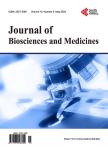The Way We Stand: A Sequential Case Study on Foot Angle
The Way We Stand: A Sequential Case Study on Foot Angle作者机构:Arizona Institute of Motion BASIS Phoenix Scottsdale USA
出 版 物:《Journal of Biosciences and Medicines》 (生物科学与医学(英文))
年 卷 期:2023年第11卷第9期
页 面:79-89页
主 题:Foot Angle Biometric Posture Linear Regression Orthopedic
摘 要:This study quantifies the significance of foot angle as it relates to common biometric data to assess its use in the clinical realm. There are two objectives to this study;first to determine the relationship foot angle has with ten surveyed biometric data points (age, weight, height, biological makeup, shoe size, orthotic use, physical activity level, competitive sports history, lower extremity injury history, and reason for visiting doctor), and second to determine the average left and right foot angles of the population studied. The duration of this sequential case study with a sample size of 73 was December 9, 2021, to April 7, 2022. Participants were fully informed of the measurement steps, the purpose of the survey, and the goal of the project. Participants were asked to walk down the hallway as a distraction to collect the most accurate data on the participants’ stance. This study was performed at the Arizona Institute of Motion, a clinical office and private practice. Participants had the option to decline participation in the study. Correlational calculations and linear regressions were performed to support or reject the existence of a relationship between foot angle and the biometric data. It was found that the average left foot angle was 26.35 degrees, and the average right foot angle was 26.54 degrees. It was found that there was a strong positive correlation between left and right foot angles, and a weak positive relationship with both foot angles and weight, height, and shoe size. The optimized linear regression model had an adjusted r2 value of 0.549 for left foot angle against right foot angle, shoe size, and height, and an adjusted r2 value of 0.522 for right foot angle against left foot angle, shoe size, and height. Foot angle had no other relationships with the other biometric data and had limited quantitative significance. Additional study is required to confirm its numerical importance, but foot angle may continue to be used



